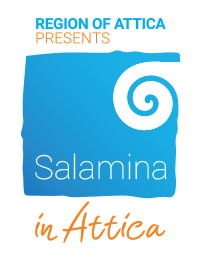Salamis – The island easiest to reach
Salamis, Attica’s largest island with a long history, is so close to Athens’s main port town of Piraeus, that it could be considered one of its neighbourhoods. Just one nautical mile and a fifteen-minute ferry ride from Perama port, this pine-studded seaside community is graced with a unique past, beautiful beaches, ancient monuments, museums, churches, monasteries and archaeological sites. Its close proximity to Athens makes Salamis (called Salamina in Greek) an ideal destination for a day trip.
Spend a little more time and discover its neoclassical architecture and interesting place in history. According to Greek mythology, Salamis was a nymph who was carried away by Poseidon, the god of the sea to live on the island. Salamis is where the mythical ruler Ajax lived and which prolific dramatist Euripides called home.
The historically significant naval battle of Salamis took place just off the island’s coast with the Greek fleet defeating the invading Persians in 480 BC. Explore Salamis and discover one of the most easily accessible islands of the Saronic Gulf.
Salamina, the largest island of the Saronic Gulf, sits just off the coast of the port of Piraeus. Its centuries-old cultural heritage, natural beauty and religious monuments make it a site to be seen. Many prominent personalities of both ancient and modern times lived here; it was the birthplace of Homer’s Ajax and the writer Euripides, the temporary residence of General Georgios Karaiskakis during the Greek War of Independence, and home to the distinguished poet Angelos Sikelianos. The island is best known for the Battle of Salamina (480 BC), a turning point in the Persian Wars. Victory here was the key to preserving Greek civilisation and spreading it throughout the world.
Salamina Island at a Glance
According to Greek mythology, the island was named after Salamina, mother of its first mythical King, Kychreas, sister of Aegina and one of the daughters of the river god Asopos. The island has been known by many names throughout its history: Pityousa (from the pitys or pine tree), Skiras (from the hero Skiros) and Kychreia (from King Kychreas). It was also known as Koulouri, which comes from the ancient cape (Kolouris akra) where the fourth-century-BC town and port were built.
Excavations conducted in Salamina have uncovered many significant finds, including the Cave of Euripides, where the poet wrote most of his works, the Mycenaean Acropolis in Kanakia, the Kingdom of Ajax and the Sanctuary of Dionysus. The island is dotted with churches and monasteries that played a key role in Greece’s War of Independence. Today, Salamina has thousands of permanent residents, while many people from Athens and Piraeus have summer homes here, given the ease of access by boat from Piraeus and Perama.
Relaxation comes easily in this uniquely charming setting, with a host of ideas for diversion. Enjoy fresh seafood and local delicacies at the scenic taverns on the waterfront.
Keep in Mind
While touring the island, consider a visit to these sites
- The Monastery of Agios Nikolaos Lemonion (17th century) and chapel of Agios Ioannis Kalyvitis (10th century), both built amid a pine forest at the south of the island toward Kanakia.
- The Cave of Euripides. Located on the southern part of the island in the settlement of Peristeria, the Cave of Euripides overlooks Peristeria Bay from the side of a rocky hill. According to tradition, the great poet was born on the island in 480 BC, the day of the historic Battle of Salamina. Excavations of the cave, where the poet often meditated and wrote most of his works, began in 1994 and were conducted by Professor G. Lolos. The Sanctuary of Dionysus is located in the same area.
- The Stone Lighthouseat Cape Konchi is located after Peristeria and before Kolones.
- The Tomb of the Salamina Fighterscan be found in Kynosoura, on the eastern part of the island. Local excavations brought to light a tomb of great archaeological importance, where the dead of the historic battle were buried.
- Two iconic windmillsstand like towers on the Hill of Agios Nikolaos, across from Patris Hill. They were built during the first years of the Revolution and once numbered 14.
- The Kingdom of Ajax, the Homeric capital of Salamina, lies to the south, in the seaside settlement of Kanakia, amid a forested area overlooking the beach. Local excavations here unearthed the ruins of a Mycenaean acropolis.
- The Monastery of Virgin Mary Faneromeni is located on the western part of the island and played a significant role during Greece’s War of Independence in 1821 against the Turks. The monastery is also famed for the 3,597 figures of saints depicted in the main church.
- The Church of Agios Dimitrios in the city centre of Salamina was founded in 1806 and is a three-aisled domed basilica. The pulpit and throne were carved by famed sculptor Giannoulis Halepas from the island of Tinos, while the frescoes are by local painter Polychronis Lempesis. The Tomb of Karaiskakis, a prominent military figure during the Greek War of Independence, is also located in Salamina at the spot where the hero was mortally wounded on 27 April 1827.
- The Church of Virgin Mary Eleftherotriarests on Patris Hill near the Euripidean Theatre. It was erected as a votive offering of the local women in October 1944, when the Germans withdrew from the island of Salamina. Construction was completed in 1998.
- The dazzling white House of Angelos Sikelianos, which also houses the bust of the distinguished poet, lies next to the ocean, across from the Monastery of Virgin Mary Faneromeni. Here the author wrote some of his most remarkable pieces, and lived with his second wife Anna until his death in 1951. The house has been declared a landmark and now operates as a museum.
- The Euripidean Theatre, located within walking distance from the town of Salamina (1km) on Patris Hill, has a capacity of 3,000. Since 1993 it has hosted cultural events, adding a touch of glamour to summer nights with its stunning view of the bay where the Battle of Salamina took place. Euripides, who was born in Salamina, is honoured with a bust at the entrance of the theatre.
- The Museum of History and Folk Art gives visitors a glimpse into the island’s past, as well as the everyday life of its inhabitants over the years. The museum is housed in the new city hall, together with the Salamina Municipal Librar.
- The Archeological Museum of Salaminahas finds on display from the Cave of Euripides and various other excavations on the island. It is housed in the old 1st Elementary School (Kapodistrian) on Lempesi Street in the city centre.
- The Metrological Reliefat Salamina consists of a slab of hard limestone with embossed depictions of parts of the human body representing various units of measure. It was found in Vasilika in 1958 and built into the wall of the church of Agios Dimitrios. It is the second such relief in the world, the other being on display at the Ashmolean Museum in Oxford, England.
Local delicacies
In the scenic taverns and ouzo bars scattered all over the towns of Salamina, Aianteio, Selinia and Kaki Vigla you can enjoy fresh fish and seafood, including grilled octopus, mussels, and fried shrimp with feta. The island also offers some exceptional meat dishes, including roast lamb and pork and coq-au-vin. Wherever you dine, try local specialities like the delicious custard-filled filo pastry (galaktoboureko), squash pie, carrot pie and pancakes.
Cafés and clubs are calling
The island is home to many excellent cafés with a range of coffees and pastries. Settle in and enjoy the spectacular sunset over the sea. Then head out to enjoy the island’s bustling night life, with numerous bars and clubs, as well as many live music venues that stay open until the wee hours.
Picture-perfect beaches
Salamina has beautiful beaches and secluded sandy coves, ideal for swimming and sunbathing. They are all easily accessible either by private vehicle, public transportation or boat. Here are a few of the island’s best beaches:
- Peristeria: A pebbly beach with crystal-clear waters. Enjoy some fresh seafood and ouzo at one of the numerous taverns here.
- Kanakia: A long, pebbly beach with emerald waters. At the edge of the beach there is a small port for boats and yachts.
- Port Iliakti: For many this is considered the island’s best beach. It features small pebbles, bright sand, azure waters and lush surroundings.
- Vasilika: A trendy spot for the younger crowds, Vasilika not only has small pebbles and crystal-clear waters, but is also home to the picturesque chapel of Agioi Anargyroi.
- Kolones: Enjoy the much-needed shade provided by the surrounding salt cedars at this beautiful beach.
- Aianteio (Moulki): This is a long, sandy beach and a nearby settlement with summer residences. This organised beach is ideal for those who love water sports.
- Club Aias: Surrounded by lush vegetation, this beach brings together small pebbles, golden sand and crystal-clear waters. Nearby, you’ll find a scenic port for fishing boats.
- Psili Ammos: A spectacular beach boasting white sand, clear, shallow waters and salt cedars as well as a fish tavern, with fresh seafood, delicious meat dishes and an incredible view.
- Selinia: This organised beach with small pebbles and azure waters lies in front of the homonymous summer resort, known for its lovely holiday residences and well-designed street plan.
- Limnionas: A small idyllic bay, this beach is covered with pebbles, but slopes into a sandy bottom.
- Saterli: A small beach with dark pebbles and a scenic waterfront tavern for ouzo and seafood.
Culture, tradition and fun
The Municipality of Salamina organises a number of cultural events throughout the year. The best-known are:
- Carnival. People from all walks of life come together to celebrate carnival throughout Salamina, which includes a lot of dancing, singing, Lenten delicacies, traditional custard-filled pastries (poupeki) and wine.
- The Karaiskakeia. These cultural and athletic events are organised annually in late May in honour of Georgios Karaiskakis, a famous hero of the Greek War of Independence.
- The Fisherman’s Celebration. Each August, the Municipality of Salamina and the Fishery Association organise a big folk festival with grilled fish and wine for all the island’s visitors to enjoy.
- The Festival of the Monastery of Virgin Mary Faneromeni. The Monastery, located on the western part of the island, organises this annual festival on 23-25 August.
- Salamineia. Annual cultural events organised in September in honour of the historic anniversary of the Battle of Salamina.
- The Festival of the Municipality of Salamina at the Euripidean Theatre. An annual festival that includes various concerts, theatrical shows, cultural events and many other attractions. At the Euripidean Theatre on Patris Hill.
- The Festival of the Municipality of Ambelakia. Concerts, theatrical shows and other cultural events all take place in the little Stone Theatre in Selinia.
Outdoor activities
Enjoy all that nature has to offer in Salamina’s two truly magical pine forests. The Forest of Faneromeni, in north-west Salamina, is ideal for jogging and trekking. The Forest of Kanakia on the southern part of the island, is perfect for running, mountain biking, horse riding and hiking.




